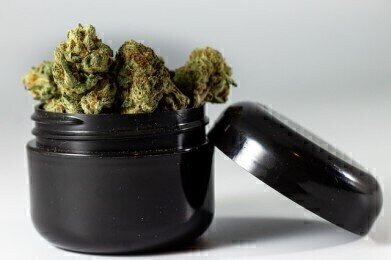Mass Spectrometry & Spectroscopy
4 Contaminants of Medical Cannabis
Mar 16 2022
Medical cannabis is prescribed to treat a myriad of issues and ailments, from chronic pain and severe nausea to PTSD and anxiety. It’s an incredibly powerful drug however without the right screening processes, consumers risk ingesting a variety of contaminants. Below, we take a closer look at some of the most common contaminants found in medical cannabis.
Microbes, fungi and mould
Microbial contamination is a major concern for cannabis producers and consumers, with recent studies identifying multiple types of fungi in dispensary products. This includes Aspergillus sp. and Penicillium sp. which are both known aflatoxin producers. Also found in corn, peanuts and cottonseeds, aflatoxins can cause long-term liver damage.
Scientists have also detected Fusarium species in medical cannabis products, which can produce mycotoxins associated with disease in humans. For immunocompromised consumers, the risk of developing an infection due to microbial contaminants is much higher.
Bacteria
While bacterial contamination is less common than fungus and moulds, studies have identified pathogenic species in medical cannabis crops. This includes E.coli and Salmonella, which can lead to serious bacterial infections in humans.
Heavy metals
The cannabis plant is highly efficient at absorbing heavy metals through soil, including cadmium, lead and mercury. While this has won the cannabis plant attention from scientists searching for ways to cleanse contaminated soils, the absorbency characteristics pose a threat to consumers. Most heavy metals biodegrade at a slow rate, allowing them to travel up the food chain and eventually reach the human body. Here, they can cause a variety of physical and neurological symptoms.
Pesticides
Despite having natural pest-resistant properties, the cannabis plant is still treated with insecticides, fungicides and other chemical products. Many of these are lipophilic, which means they dissolve in solvents used to extract cannabinoids and create popular products like CBD oil.
Calls for universal cultivation and testing standards
The considerable risk of contamination has led scientists to call for stricter laws and regulations around medical cannabis.
“Unfortunately, the classification of Cannabis as a schedule 1 drug federally makes the development and implementation of nationwide standards impossible at the moment, which if left unchanged, could lead to significant health complications in those turning to Cannabis for its medicinal properties,” state the authors of an article published in the journal Frontiers in Pharmacology. “Thus, it is imperative to develop universal standards for cultivation and testing of products to protect those who consume Cannabis,” they add.
Want to know more about how microbes, bacteria, heavy metals and pesticides are detected and quantified in medical cannabis? We spotlight testing methods and more in ‘Medical Cannabis - Testing, Analysis & Identification.’
Digital Edition
ILM 49.5 July
July 2024
Chromatography Articles - Understanding PFAS: Analysis and Implications Mass Spectrometry & Spectroscopy Articles - MS detection of Alzheimer’s blood-based biomarkers LIMS - Essent...
View all digital editions
Events
Jul 28 2024 San Diego, CA USA
Jul 30 2024 Jakarta, Indonesia
Jul 31 2024 Chengdu, China
ACS National Meeting - Fall 2024
Aug 18 2024 Denver, CO, USA
Aug 25 2024 Copenhagen, Denmark



.jpg)
24_06.jpg)













